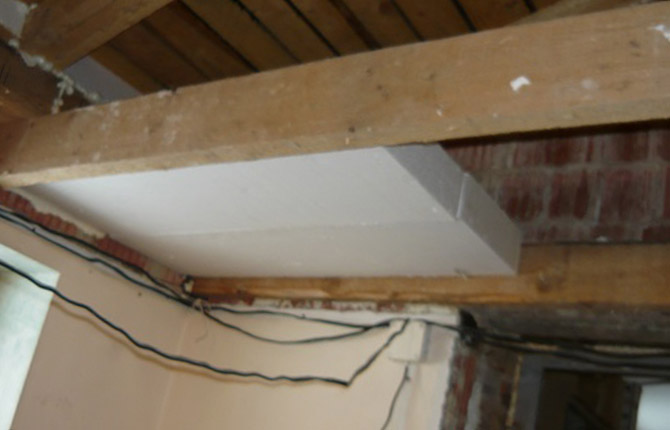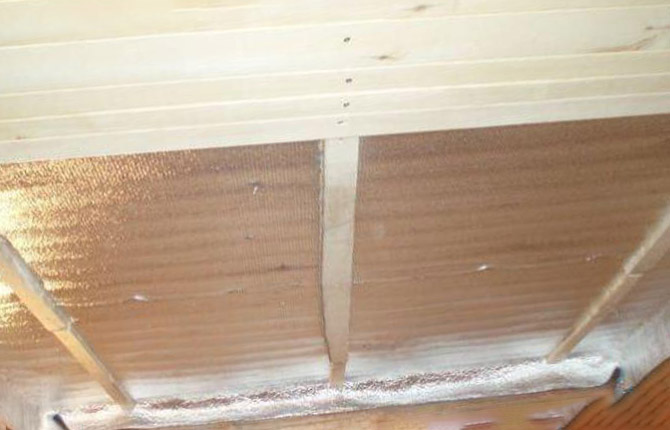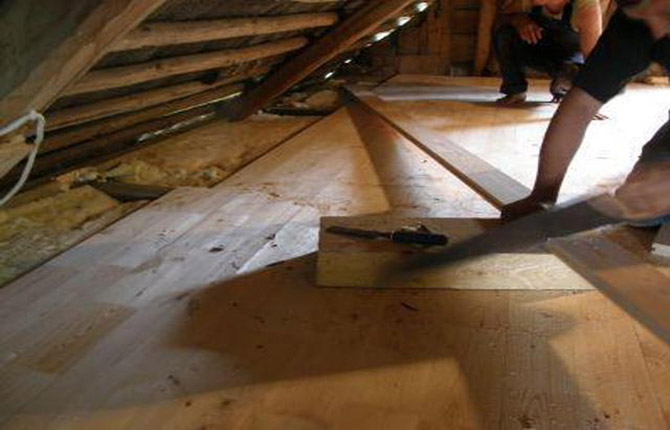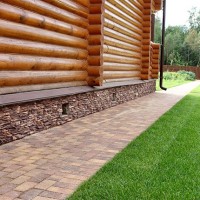How and how to properly insulate the ceiling in a bathhouse: materials and installation options
To create a comfortable microclimate inside the steam room, even at the construction planning stage, you need to choose the right way to insulate the ceiling in the bathhouse.If all stages are carried out correctly, not only good thermal insulation will be ensured, but also safety.
The content of the article:
Bathroom ceiling insulation — what is the need?
In a steam room, a comfortable microclimate is established when the air temperature reaches +70–90 °C and the humidity level is approximately 70%. Under such conditions, surfaces are systematically under the negative influence of moist hot air.
If good insulation of the ceiling in the bathhouse is not ensured, the following processes are observed:
- the air in the bathhouse quickly cools down, as the rising hot air escapes into the external environment through the attic;
- you have to constantly add fuel to the stove, which reduces its service life;
- Washing in a bath that is not warm enough is not enjoyable.
Condensation accumulates on a ceiling that has not been insulated. It flows in cold drops onto people in the steam room, causing discomfort. Excessive dampness causes wooden structures to quickly collapse. Mold and rot appear on them.
To avoid such unpleasant consequences and maintain the integrity of the surfaces in the bathhouse, you need to decide how to insulate the ceiling.
Properly installed ceiling insulation requires compliance with the following factors:
- steam from the stove remains in the internal space of the bathhouse;
- the roof receives protection from moisture penetrating through the ceiling;
- condensation does not accumulate on ceiling structures.
We read: Insulation of the ceiling in a house with a cold roof.
Insulation options — their pros and cons
You will be able to properly insulate the ceiling in a bathhouse with your own hands, provided you use a suitable thermal insulation material. When choosing, all characteristics are studied, which will eliminate negative consequences.
Cement and sawdust
They take lime, cement, sawdust and water. Component ratio: 1: 1: 10: 1.5. After mixing, the elastic mass is distributed in a uniform layer (15–20 cm) in a bath over the surface of the ceiling that needs to be insulated.
Pros:
- low cost;
- absence of harmful secretions;
- high vapor permeability.
Minuses:
- complexity of preparation and application;
- after drying, cracks often form that need to be covered;
- in terms of thermal insulation characteristics, sawdust is inferior to other types of insulation;
- When exposed to fire, this material begins to smolder.
Ecowool
This popular insulation with a fibrous structure is made from cellulose with special impregnations.
Advantages:
- environmental cleanliness;
- low thermal conductivity;
- low weight;
- resistance to temperature fluctuations;
- durability;
- thanks to the impregnation with sodium tetraborate and boric acid, rare damage to ecowool by mold and insects is observed;
- availability.
Flaws:
- If the dry laying method is practiced, the ecowool gradually cakes, which reduces the thermal insulation characteristics.
- In a situation where it is decided to insulate a cold ceiling in a bathhouse using the method of wet application of ecowool, efficiency is lost. This is due to the use of special equipment.
You also need to take into account that fiber insulation easily absorbs moisture. This leads to a decrease in thermal insulation properties. If you need to insulate the ceiling of a bathhouse, you should avoid this type of material.
Foil insulation
When deciding how best to insulate a cold ceiling in a bathhouse, they analyze different types of thermal insulation with foil coating.
Advantages:
- due to metallized coating, such material retains heat well;
- provides a high level of thermal insulation;
- allows you to save fuel.
Manufacturers offer different types of insulation with a foil surface layer:
- Basalt wool mats laminated with aluminum foil. For example, you can buy Ecoroll 35 FA insulation with a thickness of 50 mm. This non-flammable material with high thermal insulation properties is well suited for insulating the ceiling plane in a bathhouse.
- Metallized polyethylene foam. This material with a protective aluminum film will not only insulate the ceiling, but will also reduce noise and prevent moisture penetration. It is resistant to temperature changes typical for a bath, easy to install, and flexible. It cuts easily. Withstands atmospheric humidity up to 100% and temperatures -40…+100 °C. The disadvantages include the need to provide protection from direct exposure to sunlight.
Foil insulation is a good option if you decide to insulate the ceiling with this material. You should not cover all surfaces in the bathhouse with vapor-tight insulation, since in this situation proper ventilation will be required.
Penoizol
This popular thermal insulating material is also known as urea cellular modified foam.It is most often used to insulate various surfaces in a bathhouse, including the ceiling, in liquid form. Suitable for conditions with temperatures -50…+100 °C.
Advantages:
- Low thermal conductivity coefficient.
- Firmness, elasticity. Lush foam easily penetrates into all crevices. The result is a smooth surface without cold bridges.
- Resistance to mechanical load. After hardening, the material crumples under the influence of gravity, but then returns to its original shape after the pressure is removed.
- Resistance to changes in humidity and temperature.
- High vapor permeability. Due to this characteristic, condensation will not appear on the ceiling of the bathhouse.
- Good adhesion, providing reliable adhesion to different types of ceiling bases.
- Penoizol coating is not susceptible to mold, rodents and insects.
- Durability. If you properly insulate the ceiling with liquid foam insulation, the preservation of its insulating characteristics will be ensured for 50 years or more.
- Environmental friendliness. Penoizol does not emit harmful compounds during operation.
- Fire safety. The insulation is non-flammable. Does not emit toxic compounds upon direct contact with flame.
Flaws:
- Liquid foam is not suitable for surfaces that are frequently exposed to intense moisture. This is taken into account if you need to insulate the steam room.
- Sun protection is required. The material can degrade if exposed to ultraviolet radiation.
- Application requires specialized equipment.
You can buy penoizol in the form of sheets. Dowels are used to fix them. The cladding is attached to the top.
Manufacturers also offer granular penoizol.The size of the fractions does not exceed 15 mm.
Expanded clay
Popular expanded clay is a porous granule with good thermal insulation properties. The raw material for firing is low-melting clay.
Advantages:
- expanded clay does not ignite, which is important if it is decided to insulate the ceiling plane in a bathhouse with clay granules;
- belongs to the group of environmentally friendly materials, as it does not contain toxic impurities;
- has low thermal conductivity;
- has a long service life;
- is not susceptible to rot or mold;
- frost-resistant material.
Flaws:
- despite its low weight, expanded clay insulation involves pouring a 20–25 cm thick layer onto the ceiling, which increases the load on the bathhouse walls;
- If the vapor barrier film is damaged, expanded clay is able to absorb large amounts of moisture, which worsens its characteristics.
Polystyrene foam and extruded polystyrene foam
Foam plastic belongs to the group of porous materials characterized by good thermal insulation properties. The base is foamed plastic masses.
Pros of polystyrene foam:
- low weight, allowing not only to insulate the ceiling by laying sheets in the attic, but also fixing them to the surface from the inside;
- good strength indicator;
- high moisture resistance.
Minuses:
- when the material is heated, toxic compounds are released into the atmosphere;
- polystyrene foam is easily damaged by rodents;
- insulation is characterized by a short service life.
When choosing, you can analyze another type of insulation with similar characteristics - extruded (extruded) polystyrene foam, which is often sold under the Penoplex brand.Despite the same type of raw material, it differs from foam, created by the action of steam, in the extrusion production method.
Advantages of extruded polystyrene foam:
- If you need to insulate the ceiling with polystyrene foam, its thickness will be lower than that of polystyrene foam. This is explained by the lower thermal conductivity.
- Penoplex is distinguished by its ability to maintain operational properties at -50…+70 °C.
- Not susceptible to colonization by fungal colonies.
- It has an average service life (30–50 years), which is longer than polystyrene foam.
- Extruded polystyrene foam is characterized by high compressive strength and minimal water absorption.
Minuses:
- The insulation with a porous structure attracts rodents. Mice and rats can make holes in it.
- When heated, it releases styrene, which is harmful to health.
- Belongs to the group of combustible materials.
If you choose a material to insulate a bathhouse from the ceiling, then for such specific conditions polystyrene foam, extruded polystyrene foam, and any other type of polystyrene cannot be used. This is due to the ability of materials to release toxic fumes into the surrounding atmosphere when heated.
Mineral wool
Frequent use mineral wool in the role of insulation is explained by the availability and easy installation of this material, represented by three types: glass wool, slag and stone (basalt) wool.
Slag wool
The raw material is molten slag remaining during blast furnace production.
Advantages:
- Slag insulation belongs to the group of non-combustible materials. Melts when the temperature reaches over 300 °C.
- Demonstrates high levels of thermal insulation and sound absorption.
- It is light in weight, which makes installation easy.
- Not damaged by rodents and insects.
Flaws:
- When systematically exposed to moisture, slag wool loses its characteristics. As a result, the service life is reduced.
- When water comes in direct contact with the insulation, aggressive acids are formed.
- When heated, vapors of phenol-formaldehyde resins are released.
Glass wool
The raw material for this type of insulation is molten glass.
Advantages:
- Glass wool has high strength and elasticity.
- The material, consisting predominantly of fibrous inclusions, demonstrates high vibration resistance.
- Due to its flexibility, it is suitable for laying on uneven surfaces.
- Glass wool does not burn. If the temperature reaches +250...450 °C due to burnout of the binder resins, performance characteristics are lost. Sintered at +500…+550 °C.
- Microorganisms do not settle on the insulation.
Flaws:
- The danger comes from brittle fibers that produce prickly dust. On the skin it causes itching and irritation. When inhaled, lung damage occurs in the form of asthma, bronchitis, and cancer. Glass wool getting into the eyes causes pain, stinging, and tearing.
- When periodically moistened, glass wool shrinks.
- Due to the use of phenol formaldehyde as a binder, toxic compounds are released into the air.
Stone wool
The raw material for this type of insulation is the melt of mountain (mainly gabbro-basalt) rocks.
Advantages:
- Due to its porosity, basalt wool, which can be used to insulate a steam room, has high vapor permeability.Demonstrates good heat and sound insulation properties.
- The material is non-flammable. It begins to disintegrate with the formation of hot dust at +600...700 °C.
- It is durable. Does not lose technical properties for 50 years or longer.
- Positive aspects include biological resistance, environmental friendliness, easy installation, and low weight.
To safely insulate the ceiling in a bathhouse using this group of thermal insulation materials, you need to use stone wool. In any season, it will ensure good heat retention inside the steam room and will not become moldy.
Installation options depending on the type of ceiling
In order to properly insulate the ceiling in a bathhouse, you need to take into account the design features.
Panel ceiling
A bathhouse built with a cold roof can be well insulated by the panels used to install the ceiling. They represent modules with insulation inside. It’s easier to buy ready-made panels, although if you wish, you can make them yourself.
Sequencing.
- Two beams with a diameter of 50 x 100 mm are laid on a flat surface parallel to each other. The interval between their outer sides is 500 mm. They nail down pieces of board using nails. Their length is 600 mm, which allows them to protrude beyond the beam by 50 mm on both sides. Suitable board thickness is 25–30 mm.
- When all the dies are nailed, the structure is turned over. Using a construction stapler, fix the vapor barrier film inside. Leave the upper planes of the beams open.
- If it is decided to insulate the future ceiling with basalt wool, then continue assembling the panel on the ground. For heavier insulation, it is advisable to first move the structures to the attic of the bathhouse, since the weight of the finished module can be significant.Mats (1) are placed tightly between the beams. To maintain the integrity of the insulation during lifting, temporary wooden jumpers (2) are nailed.
- In this form, the panels are lifted and placed on the crown. You can first prepare a stepped special groove for them on the upper edge of the wall or attach a beam. An insulating layer (2), for example, felt tape, is first placed under the panels at the points of contact with the wall of the bathhouse. When installed between panels (3) with temporary jumpers removed, a gap of 100 mm remains, necessary to insulate the joints. In each such narrow opening, a vapor barrier film is spread on the sides and bottom, and then a strip (4) of basalt wool is laid. The insulation will reliably close the cold bridges.
After these operations, a diffuse membrane is spread on the panels, which is secured to the bars with brackets. Lay on both sides and in the center of the board (5) with a thickness of at least 30 mm. Their length should be such as to hold all the panels together. Boards are nailed to each beam. All that remains is to install the outside flooring for the attic floor.

false ceiling
This type of ceiling is chosen if an attic is intended to be built above the bathhouse. The beams are made from the same material as the frame, providing them with the necessary strength.
Subsequence:
- Before insulating the ceiling, lathing is done, providing a hole for the pipe.
- A vapor barrier film is attached to the bottom side extending 20 cm onto the walls. The foil layer is turned inside the bathhouse. It will ensure heat retention. The strips are overlapped. The joints are glued with waterproof aluminized tape. Several slats are nailed for fixation.They will simultaneously serve as a frame for subsequent cladding of the ceiling, which needs to be insulated, with clapboard.
- Then, already under the roof, the insulation of the bathhouse from the attic side continues. If heat-insulating mats are used, they are laid between the beams in a layer of about 10 cm. Leave a distance of about 3 cm from the insulation to the top edge of the beams. This gap allows you to insulate the bathhouse more reliably, as it will ensure air circulation.
- Waterproofing membrane sheets are spread on top. The overlap is about 10–15 cm. Construction tape is used to seal the joints. Then the frame ceiling is sheathed with boards, creating the floor of the attic.
Considering the strength of the false ceiling, it can be insulated with other materials. For example, dried garden soil or a solution of clay mixed with chopped straw will be cheap.
Flat ceiling
An easy-to-install floor ceiling is used for a small bath area. Since the boards are laid directly on the walls without support beams, it will not be possible to equip the attic in this situation. To insulate the bathhouse from above, you will need lightweight thermal insulation material. The thickness of the boards must be at least 50 mm.
In accordance with the diagram showing a section of the structure, the following sequence of operations is practiced when creating a floor ceiling:
- The boards (2) are laid on the walls (1) so that they overlap them by at least 50 mm. There should be no gaps between the boards, so choose well-treated lumber.
- Spread the vapor barrier film (3).
- Thermal insulation material (4) is laid. To insulate the structure, they often take varieties in rolls or mats. For bulk insulation, you will need to install partitions made of bars (5).
- To insulate the ceiling more reliably, spread a diffuse membrane (6) to provide waterproofing. Cover the surface with plywood or boards, securing them with self-tapping screws.
Sometimes the top is left without boarding, since the attic space will not be used.
When choosing options for how to insulate the ceiling in a bathhouse, they analyze different methods. This will allow you to competently perform the necessary actions to ensure a comfortable, safe microclimate. If you are interested in the information presented in the article, share it with your friends and add it to your bookmarks. Maybe you have already done the insulation in the bathhouse ceiling with your own hands? Please tell us about your experience in the comments.




























Can beams and boards in a bathhouse be painted or varnished?
Considering the increased humidity and temperature, paint and varnish coatings should not be used for wooden structures. You can sand them. Over time, the wood will darken. You can impregnate the beams with natural drying oil or beeswax.
What are the best boards to use for the ceiling in a steam room?
Considering the need to create an airtight ceiling covering in the steam room, tongue and groove lumber is used. It is easier to install and cracks less over time.